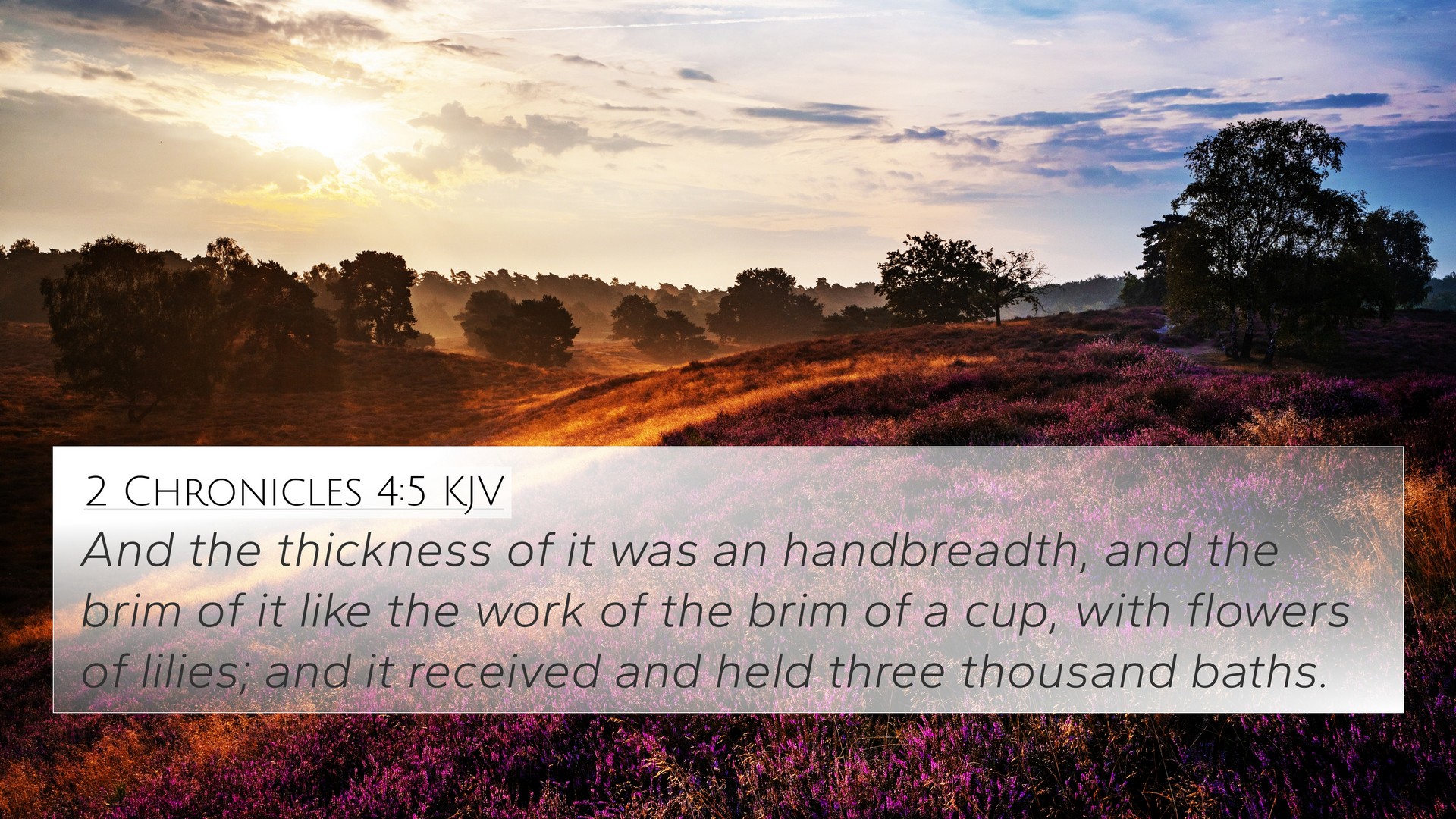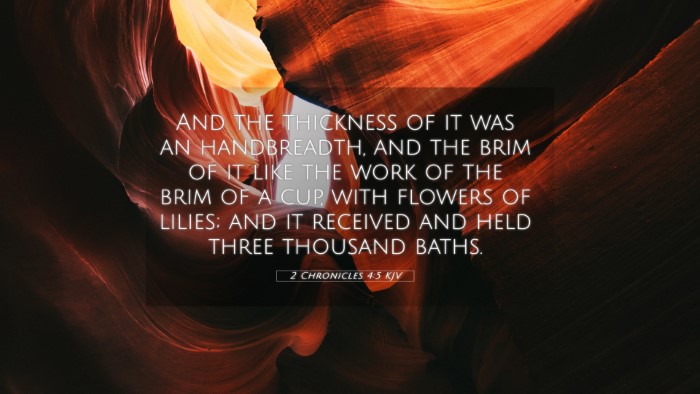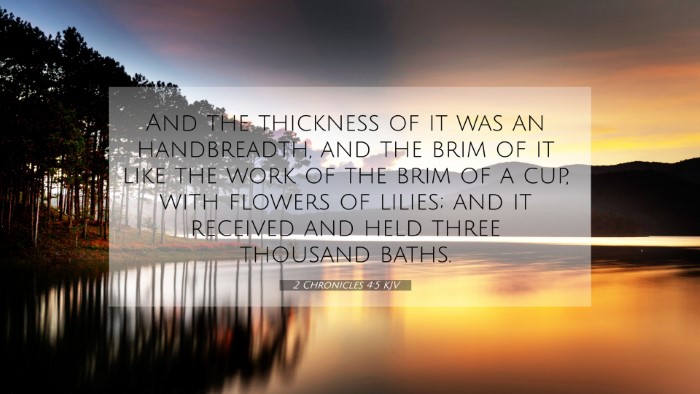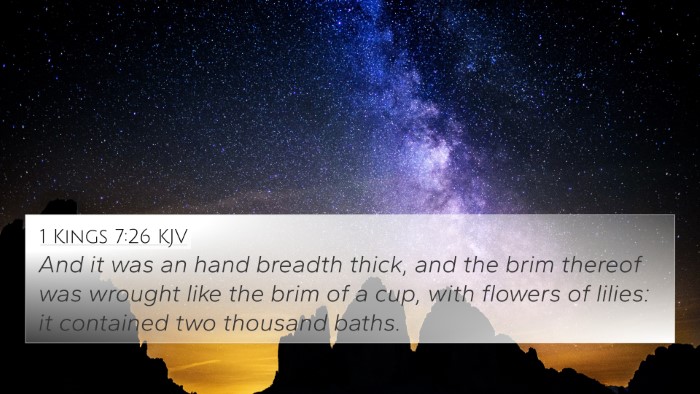Understanding 2 Chronicles 4:5
Verse: 2 Chronicles 4:5 - "And the thickness of it was an hand breadth; and the brim of it like the work of the brim of a cup, with flowers of lilies; and it received and held three thousand baths."
Meaning: This verse describes the structure and dimensions of the great brass sea in Solomon's temple, symbolizing the grandeur of God's provision and the magnificent worship environment.
Insights from Public Domain Commentaries
We can draw valuable insights from various public domain commentaries, including Matthew Henry, Albert Barnes, and Adam Clarke, to deepen our understanding of this verse.
Matthew Henry Commentary
Matthew Henry highlights the symbolic significance of the brass sea as a place of cleansing and purification. The large capacity of this vessel (three thousand baths) signifies the abundance of God's grace and the provisions available for the cleansing of the people. The description of the rim, likened to "flowers of lilies," reflects the beauty and intricacies of God's design in worship practices.
Albert Barnes Commentary
Albert Barnes focuses on the measurements and physical attributes of the brass sea. He emphasizes that the vessel's thickness and its craftsmanship mirror the durability and permanence of God’s covenant with His people. Additionally, the decorative elements, such as the flowers, symbolize the life and vibrancy that God inspires in the act of worship and service.
Adam Clarke Commentary
Adam Clarke remarks on the cultural and ritualistic implications of this passage. He draws a connection to the significance of water in Hebrew worship, as it represents both physical and spiritual cleansing. The ornate design imbues the worship setting with a sense of reverence and beauty, essential for attracting people's attention to the holiness of the ritual.
Cross-References and Thematic Connections
2 Chronicles 4:5 can be cross-referenced with several other Bible verses that share thematic elements, such as worship, purification, and God's provision. Below are notable connections:
- 1 Kings 7:23-26: Describes the same brass sea and its purpose.
- Exodus 30:18-21: Discusses the bronze laver for priestly cleansing.
- Psalm 51:7: Emphasizes the need for purification—"Purge me with hyssop, and I shall be clean."
- John 4:14: Jesus speaks of living water that leads to eternal life.
- Ephesians 5:26: Addresses the cleansing aspect of Christ's love through the word.
- Hebrews 9:19-22: Discusses the significance of blood in purification rituals.
- Isaiah 1:16-18: A call to make oneself clean and the promise of forgiveness.
The Importance of Cross-Referencing
Cross-referencing scripts, such as those discussed from Matthew Henry, Albert Barnes, and Adam Clarke, aids in:
- Understanding thematic layers within the scripture.
- Identifying connections between Bible verses.
- Enabling a comprehensive Bible cross-reference guide for deeper study.
How to Use Bible Cross-References
To effectively utilize Bible cross-referencing, consider the following steps:
- Identify the main theme or keywords in the verse.
- Look for similar verses that discuss the same theme.
- Use tools such as a Bible concordance for extensive cross-reference.
- Engage in comparative Bible verse analysis to see how verses relate.
Conclusion
2 Chronicles 4:5 is not just a description of a physical object; it wears a rich tapestry of meaning woven through intricate designs representing God's love, care, and the need for purification. By leveraging scripture cross-references effectively, one's understanding and appreciation for Biblical teachings can flourish.



